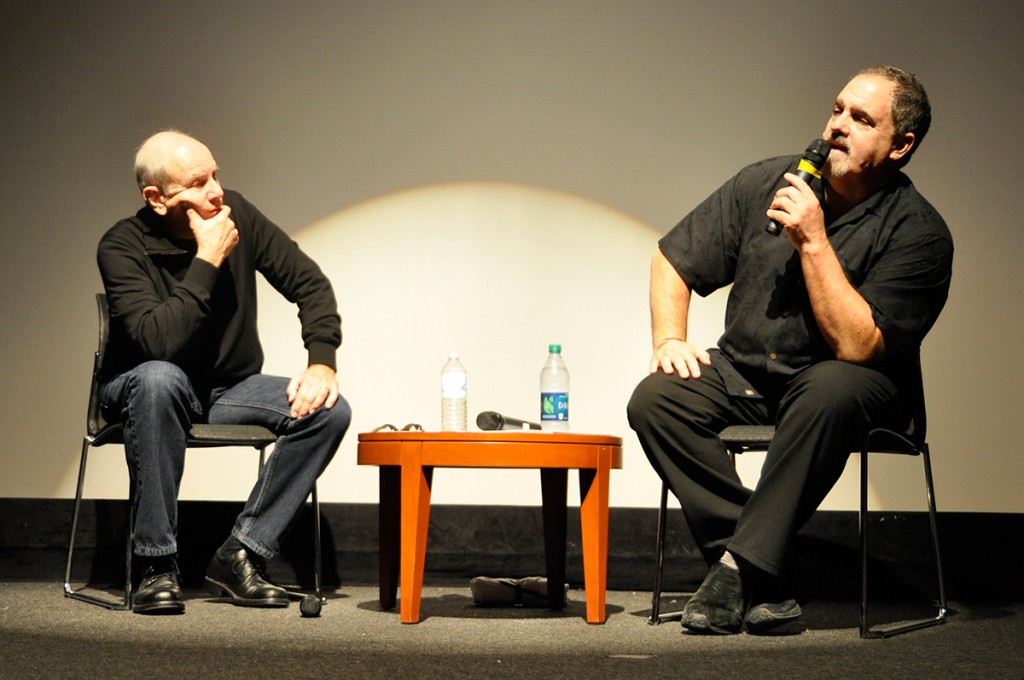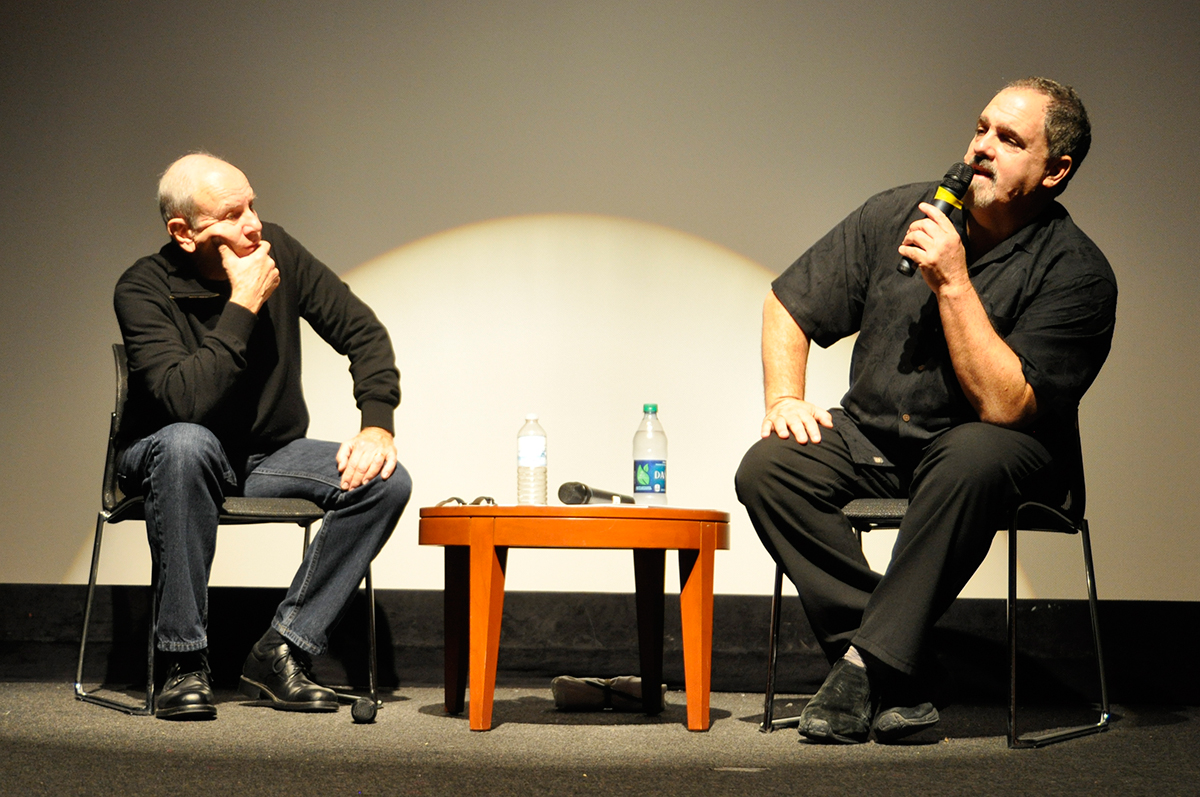
On Monday at Cosford Cinema, John Soliday, a film professor in the School of Communication, revealed a story connecting the University of Miami to Jon Landau, an acclaimed film producer who helped create blockbuster classics like “Titanic” and “Avatar.”
To introduce the impact of Landau’s films, Soliday said that a month and a half before she passed away in early December 2014, Edna Shalala, President Donna E. Shalala’s mother, referred to the time when she held the Oscar from “Titanic” when Landau last visited the university in 2012.
This one was one of many anecdotes shared during Landau’s discussion as part of a master’s class open to the public. He shared insights on the film industry, the technological developments driving “Avatar” sequels (yes, there will be an “Avatar 2”), and how he became a successful producer.
Landau, the son of film producer parents, studied film at the University of Southern California (USC). What he enjoyed most about his education was being able to take liberal arts courses in history and literature that complemented the film program.
“When you’re creating media content, you have to understand the people you’re trying to communicate to,” he said. “I had a broad enough education that had an impact on me.”
After USC, Landau went to New York for his first job as a set production assistant. And while he spent most of the six weeks working three blocks away from the set directing traffic, Landau stressed that the opportunity allowed him to ask all kinds of questions about producing a film.
Landau advised that anyone looking to get involved in the industry should be willing to learn on a daily basis.
“Education does not stop when you leave UM,” he said.
This moment left an impression on Jacob Steiner, a senior majoring in film. Although Steiner wants to hone his skills as a cinematographer, he wants to “dabble” in all parts of the film industry, from television to traditional cinema.
As Landau moved up in the industry, he was first exposed to visual effects in “Honey, I Shrunk the Kids,” a Disney film about a scientist that shrinks his children. This is where he “fell in love with the idea of creating worlds.”
“All the movies I have been involved with have had an opportunity to sink people into those worlds,” Landau added.
Fast forward to 2009 and visual effects become the impetus behind James Cameron’s ambitious “Avatar.” Nominated for six Oscars and winner of three in 2010, “Avatar” is a science-fiction story about humans trekking through the exotic planet of Pandora that is home to fantastic beasts and majestic forests and mountains.
According to Landau, “Avatar 2” is expected to be released in 2017. He also discussed the possibility of expanding the Pandora universe to other media – everything from video games to a home in the Walt Disney World theme park in Orlando.
Disney plans to develop a Pandora-themed land in Animal Kingdom. From what Landau revealed, there will be a few attractions (including the land itself), which will be interactive.
“Avatar” revolutionized the ways movies were produced by creating a digital world that is not animated. Instead, new technology like cameras capture performances virtually. The actors’ movements and facial expressions could be read in the computer and seen real-time.
The technical parts of Landau’s conversation fascinated students like Marcus Alcindor, a junior studying film and graphic design. Alcindor saw “Avatar” and hopes he gets the chance to work with that kind of technology and own his own production company someday.
“I would be down to work on the next ‘Avatar’ to learn a lot from what they’re doing,” he said.







